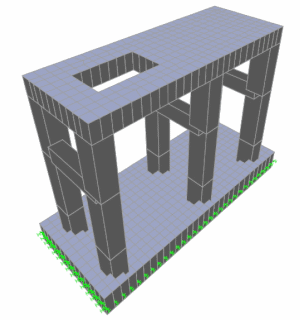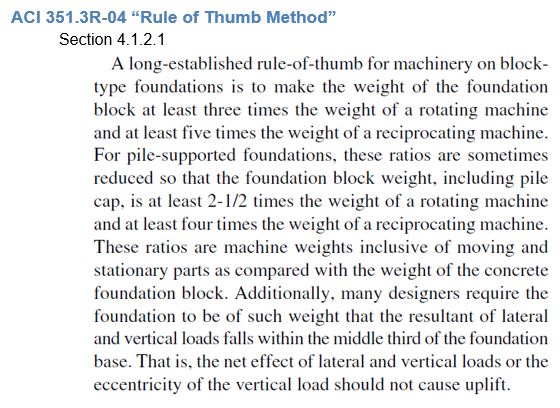I am working on the design of 3 pumps siting on top of a circular slab of a wet well.
In PIP REIE 686, it states that "A dynamic analysis of an elevated frame foundation(table-top foundation) shall be required to demonstrate that the natural frequencies of the foundation do not coincide with and are separated from the operating speed range of the equipment by at least 20 percent. The foundation design for variable-speed equipment will require that the foundation be checked for resonant frequencies through the entire range of operating speeds."
Would anyone happen to know a technical document that has an example of performing a dynamic analysis for a table top foundation?
PIP REIE 686 states: A “table-top foundation” is an elevated three-dimensional reinforced concrete structure that consists of large beams or a thick slab connecting the tops of the supporting columns. The mechanical equipment is supported by the large beams or the slab located at the top of the structure.
Suggestions/comments are appreciated.
In PIP REIE 686, it states that "A dynamic analysis of an elevated frame foundation(table-top foundation) shall be required to demonstrate that the natural frequencies of the foundation do not coincide with and are separated from the operating speed range of the equipment by at least 20 percent. The foundation design for variable-speed equipment will require that the foundation be checked for resonant frequencies through the entire range of operating speeds."
Would anyone happen to know a technical document that has an example of performing a dynamic analysis for a table top foundation?
PIP REIE 686 states: A “table-top foundation” is an elevated three-dimensional reinforced concrete structure that consists of large beams or a thick slab connecting the tops of the supporting columns. The mechanical equipment is supported by the large beams or the slab located at the top of the structure.
Suggestions/comments are appreciated.


![[idea] [idea] [idea]](/data/assets/smilies/idea.gif)

